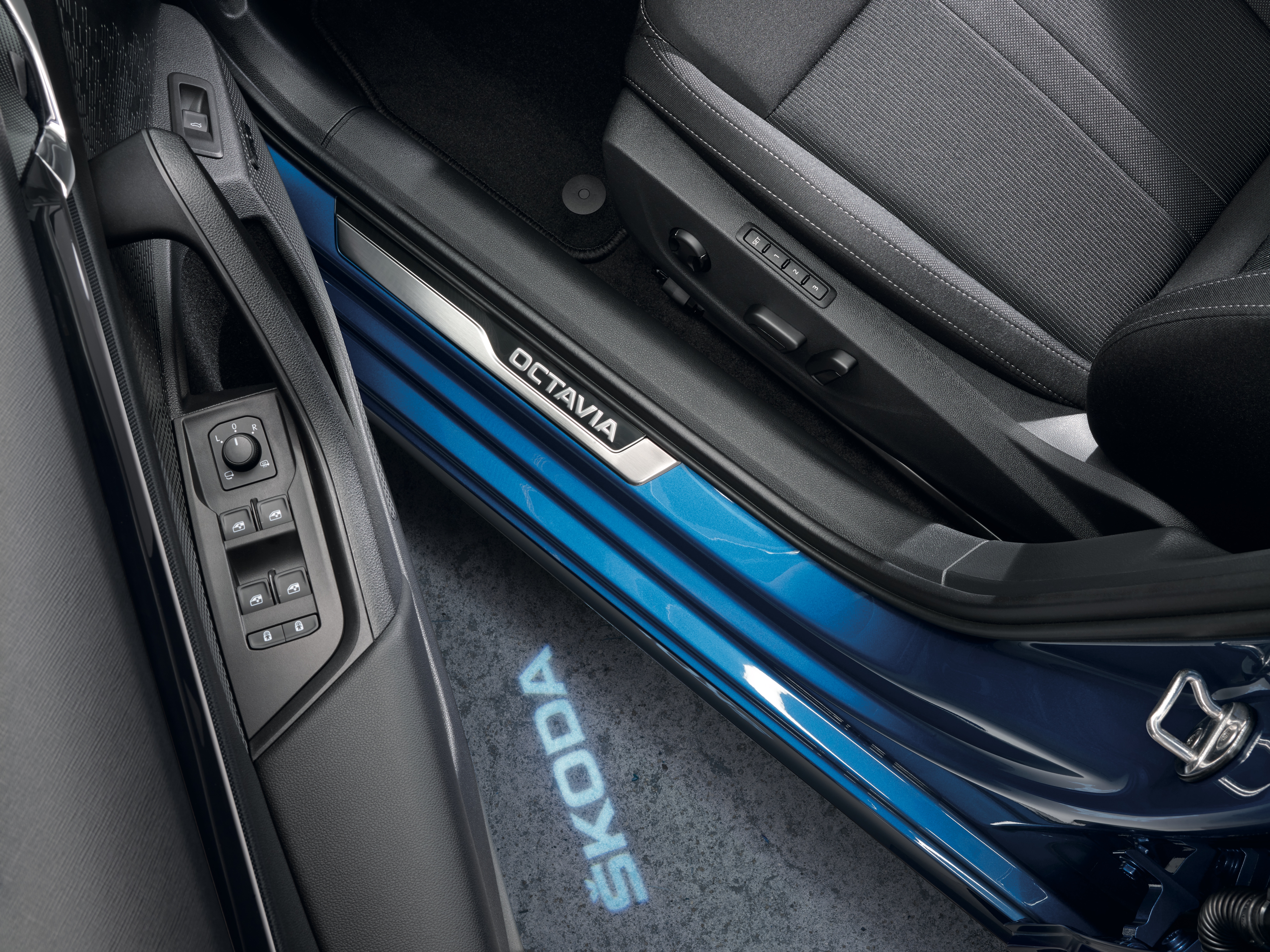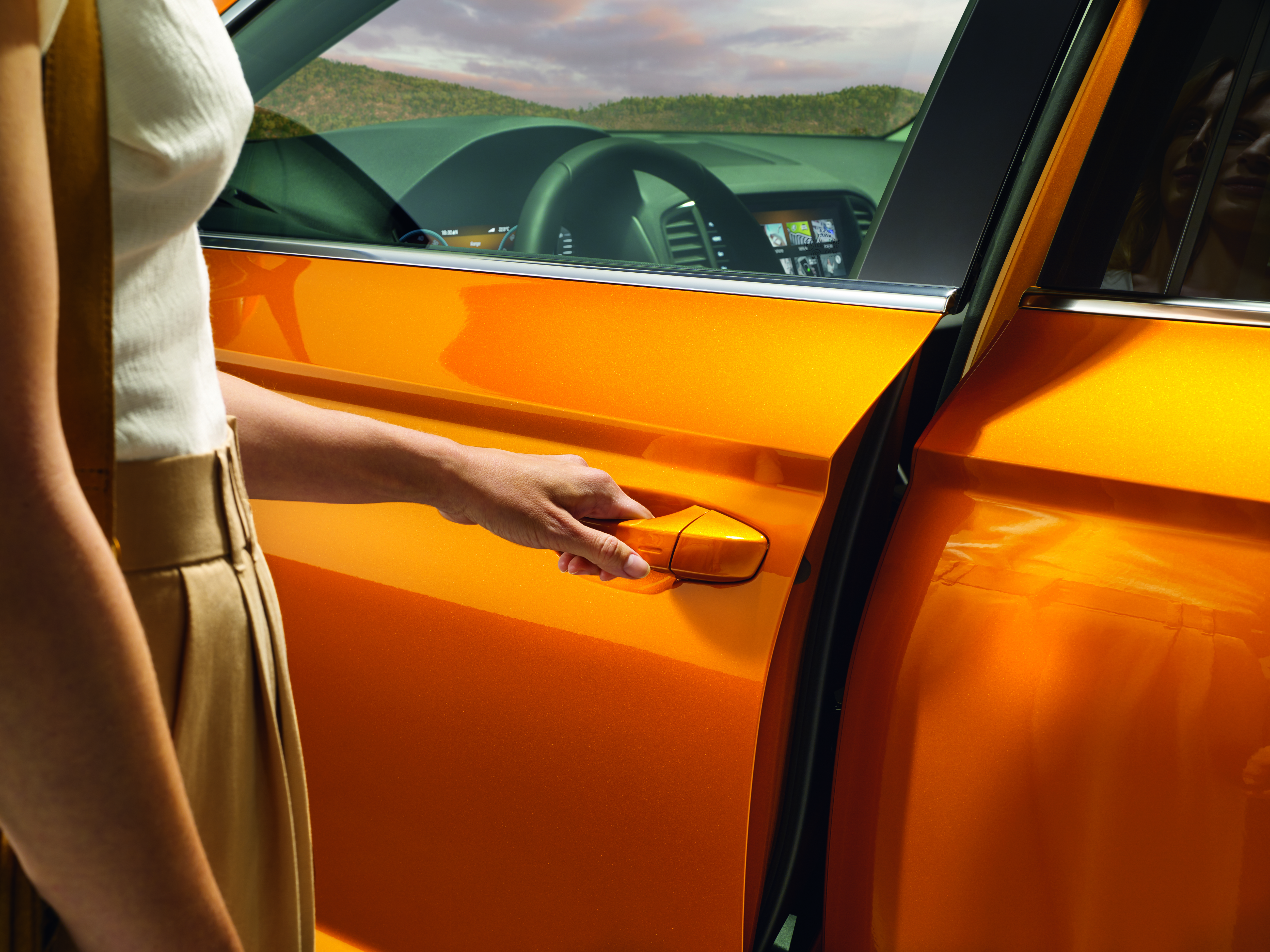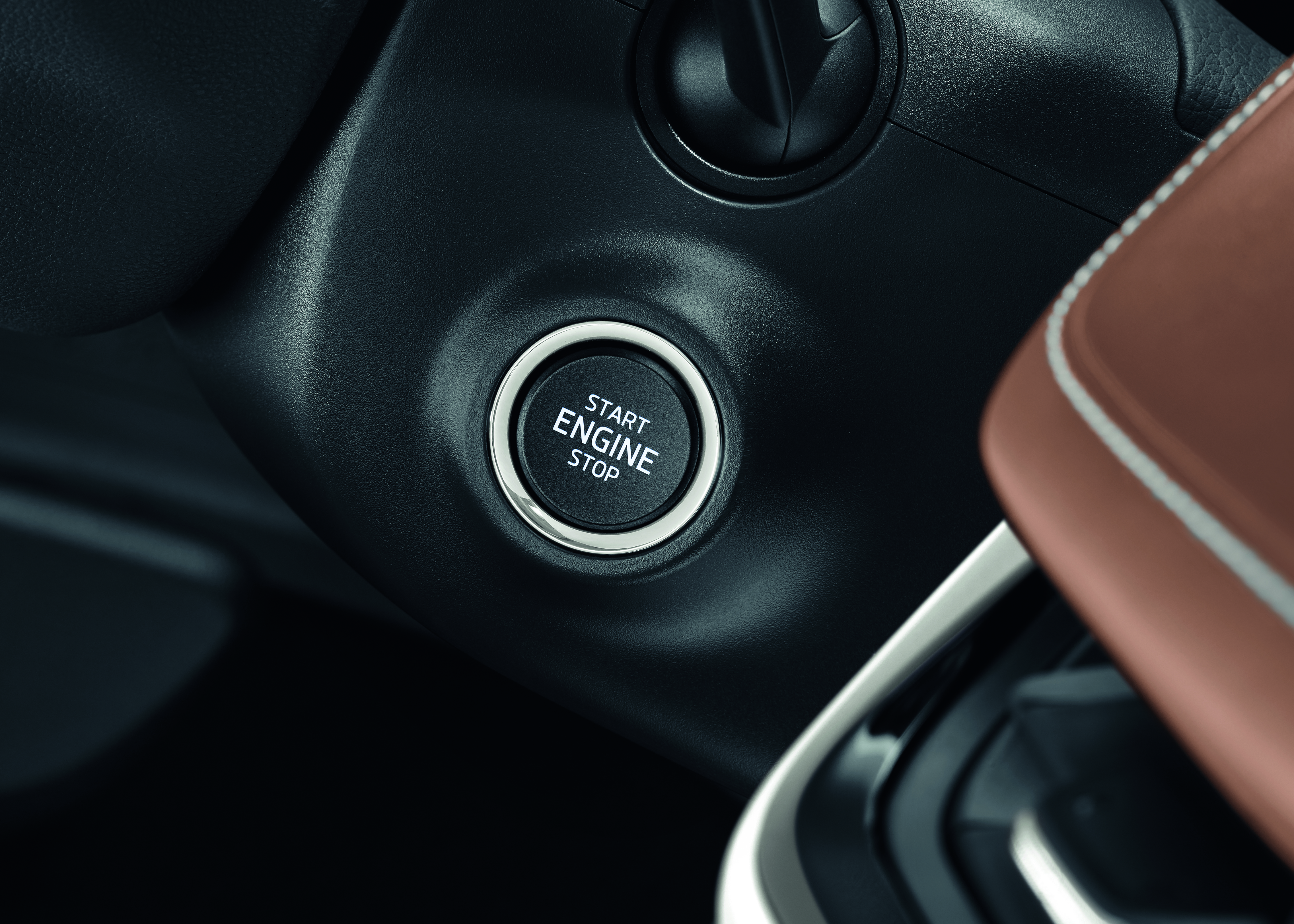Doors for all seasons
While locking systems have transformed radically over the years, the basic principle of car side door mechanics remains essentially the same as before. If anything has fundamentally changed, it’s how today’s doors as a whole withstand the weather. Forty or so years ago, frozen-up lock cylinders and the resulting complications with unlocking the car, or difficulty in closing the side windows, were not rare – water got everywhere and nothing could stop it from freezing.
 Besides providing protection, the doors illuminate the ground when you're getting out.
Besides providing protection, the doors illuminate the ground when you're getting out.
But the second half of the 1990s brought changes, as more effort was devoted to making doors that were robust and weatherproof, and to ensuring that the opening and locking system works in all conditions. “That’s basically where we are today, when we can guarantee that when you approach your car, you don’t care that there was a big freeze after heavy rainfall. The doors of modern ŠKODAs still have their wet and dry areas, but there’s been massive progress in door design and mechanisms. The main difference is that water enters the wet area of the door much less than it did before and it’s kept away from critical areas. The door locks and the Bowden cables for operating them are designed so that water and low temperatures do not affect their function,” explains Simon Jeníček from the Side Door and Rear Lid Mechanisms Development Department.
 Remote opening of the fifth door of the ŠKODA ENYAQ COUPÉ iV
Remote opening of the fifth door of the ŠKODA ENYAQ COUPÉ iV
The structures of a door depend on the era the model was developed in, which is linked to safety requirements or the regulations of the individual territories around the world where the cars are delivered. “For a car for North America, for example, there could be differences in the thickness of the struts – American requirements are stricter than European ones in this respect,” says Petr Havelka from this department specialising in door mechanisms.
In principle, there won’t be much difference between the doors of the ŠKODA FABIA and KODIAQ either. Even though they are cars of different sizes and weights, with different requirements for mechanical resilience, they still have doors on hinges that have external and internal sheet metal, struts inside the door, by the handle, by the hinges and by the locks. And as far as the locks are concerned, they are almost identical for the FABIA, KODIAQ or SUPERB.



































